LYnchburg Welcomes you!
We can’t wait for you to visit Lynchburg and get a taste of what we’re all about here. But, before you come, let’s get some details out of the way so all you have to do is show up, hang out, and have a great time. Here are the top six things you need to know before visiting Lynchburg, Virginia.
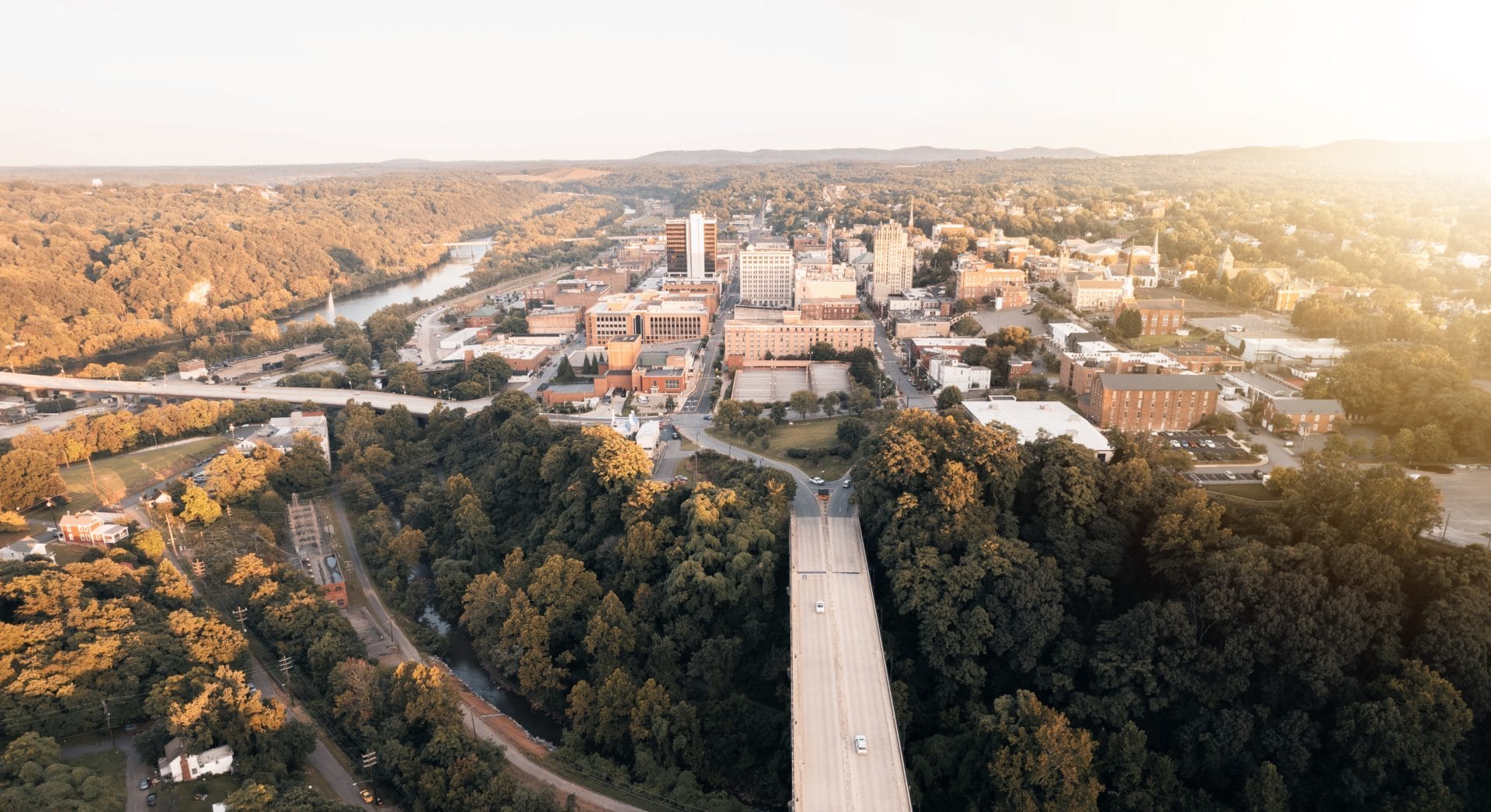 1. How Lynchburg, Virginia Got Its Name
1. How Lynchburg, Virginia Got Its Name
Lynchburg was founded by John Lynch at the age of 17. John Lynch started a ferry service across the James River in 1757 and in 1786, the Virginia General Assembly granted Lynch a charter for a town, which encompassed the 45 acres of land that he owned. Lynchburg was officially incorporated as a town in 1805 and as a city in 1852. John Lynch was also responsible for Lynchburg’s first bridge across the river, which replaced the ferry in 1812. As you walk through our neighborhood or fly into the Lynchburg Regional Airport, you’ll notice the abbreviated travel code for Lynchburg is LYH. We like to say that Virginia is for Lovers and LYH Loves You!
Lynchburg is also often called the City of Seven Hills and for good reason. When you visit Lynchburg, you’ll be greeted by a city of rolling hills and multiple Historic Districts that weave throughout the landscape of the city. Each of the seven primary hills has an interesting history behind its name. To learn more about Lynchburg’s historical founding and neighborhoods, visit the Lynchburg Museum located in Downtown Lynchburg.
2. Lynchburg has been named a Top College Town
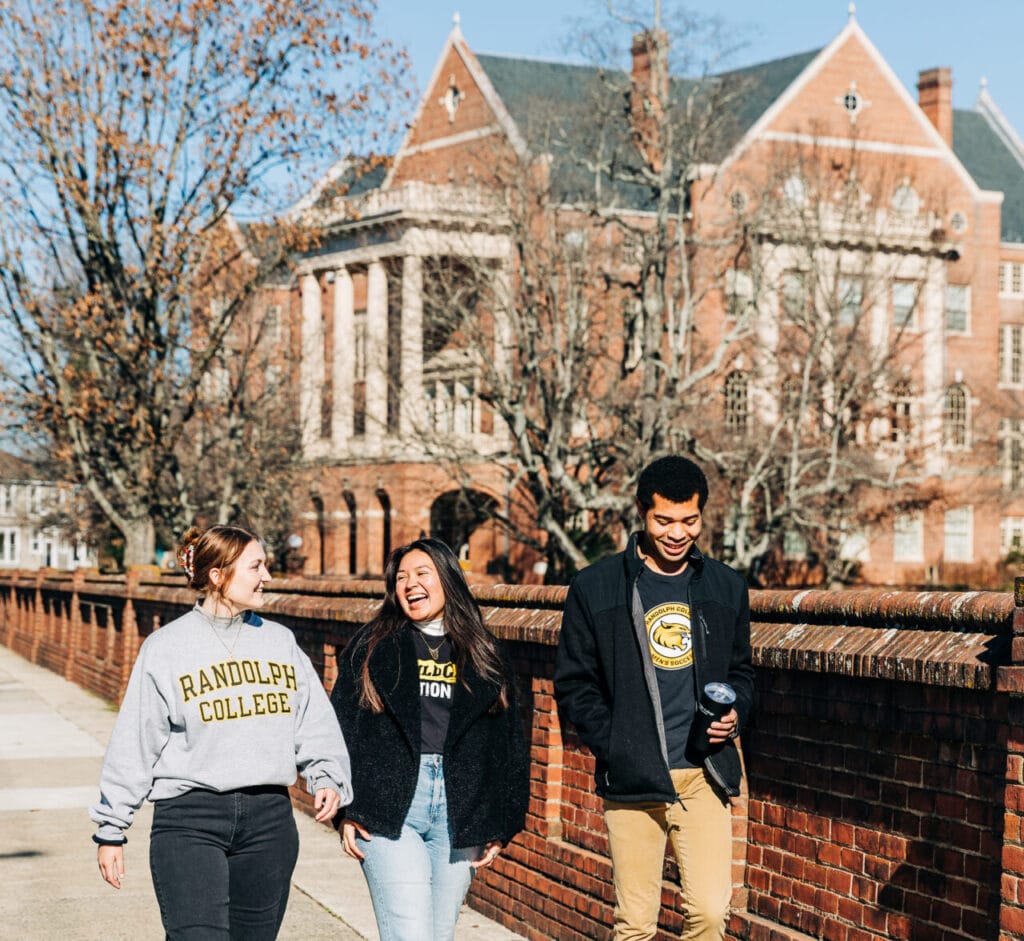
Randolph College is located in the Rivermont Historic Neighborhood.
Lynchburg has been rated a “Top College Town” by Travel & Leisure and by USA Today, and it’s no doubt that when you step foot in our City, you will feel it! The City of Lynchburg is proud to be home to 6 colleges and universities: Central Virginia Community College, Liberty University, Randolph College, Sweet Briar College, the University of Lynchburg, and Virginia University of Lynchburg.
- Liberty University is the largest of the 6 colleges & universities with about 15,000 students on campus. Liberty University also has a robust athletics program competing in Conference USA.
- U.S. News & World Report has ranked Randolph College among the nation’s top liberal arts colleges, Randolph College is recognized for its academic programs, small class sizes, picturesque campus, and diverse, close-knit community.
- The Princeton Review and Colleges of Distinction have all recognized the University of Lynchburg as one of the best private institutions in the nation. The University of Lynchburg offers undergraduate and graduate degrees as well as three doctorate programs and an array of professional certifications.
Because of our colleges and universities, the City of Lynchburg has a median age of 28 years old, and each year, our colleges and universities confer over 24,000 2-year, graduate, and post-graduate degrees.
3. A Family-Friendly City

The Corbett Family pictured above owns All Belong, a company that hosts several short-term rentals throughout the City. Their mission is to create welcoming spaces for everyone to enjoy.
One thing you’ll notice when visiting our beautiful walkable city is that there is plenty to do here for all ages. Downtown Lynchburg is home to the nationally awarded children’s museum, Amazement Square, a hands-on creative learning space for children. If you’re feeling more adventurous, the whole family can have a blast at Liberty University’s SnowFlex, with snowboarding, sledding, tubing, and an Olympic Grade trampoline. SnowFlex is open year-round thanks to its patented artificial snow.
Ride bikes or hike from downtown over the James River to Pervical’s Island Trails. The flat and accessible trail, located on an old railroad bed, meanders through scenic woodlands and wetlands. Challenge your kids to a game of laser tag or an afternoon of roller skating at FunQuest Family Entertainment Center. This complex even has an indoor playground and arcade.
Lastly, reward the family by chilling out at MayLynn’s, a popular downtown ice cream shop that started as a food truck. Locals and visitors can’t get enough of the homemade treats like rolled ice cream and sundaes as well as soft serve and hand-dipped cones. During the summer months, you can run through the spray ground right next door at Riverfront Park!
4. Lynchburg’s scenic beauty and outdoor recreation
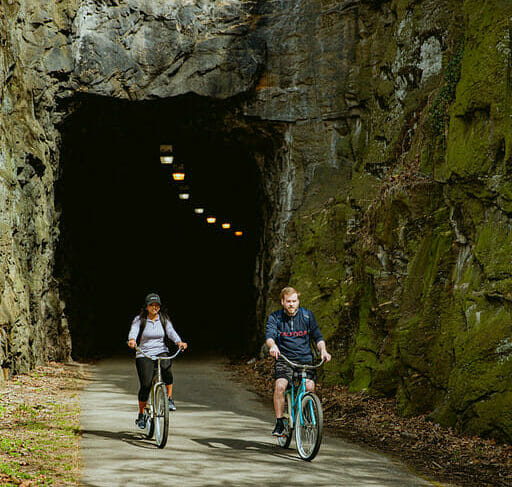
Biking on Blackwater Creek Trail (Hollins Mill section).
People who enjoy being outdoors loved Lynchburg! From scenic, well-traveled trail systems and city parks to hikes in the breathtaking Blue Ridge Mountains to outdoor adventure sports and river activities, this incredible city has so much to offer the adventure-loving visitor. Lynchburg has an urban trail system that includes over 40 miles of paved and earthen trails. We invite you to rent a bike from Bikes Unlimited, take a scooter, or walk our trail system. If you are interested in hiking sections of the Appalachian Trail or cruising down the Blue Ridge Parkway, Lynchburg is a short drive away from multiple access points.
The James River runs right through our riverfront downtown; visitors can rent canoes and kayaks from James River Adventures. If you prefer staying dry, take a walk on the Percival’s Island trail for scenic overlooks of the river.
5. Lynchburg is an Arts & Culture Hub
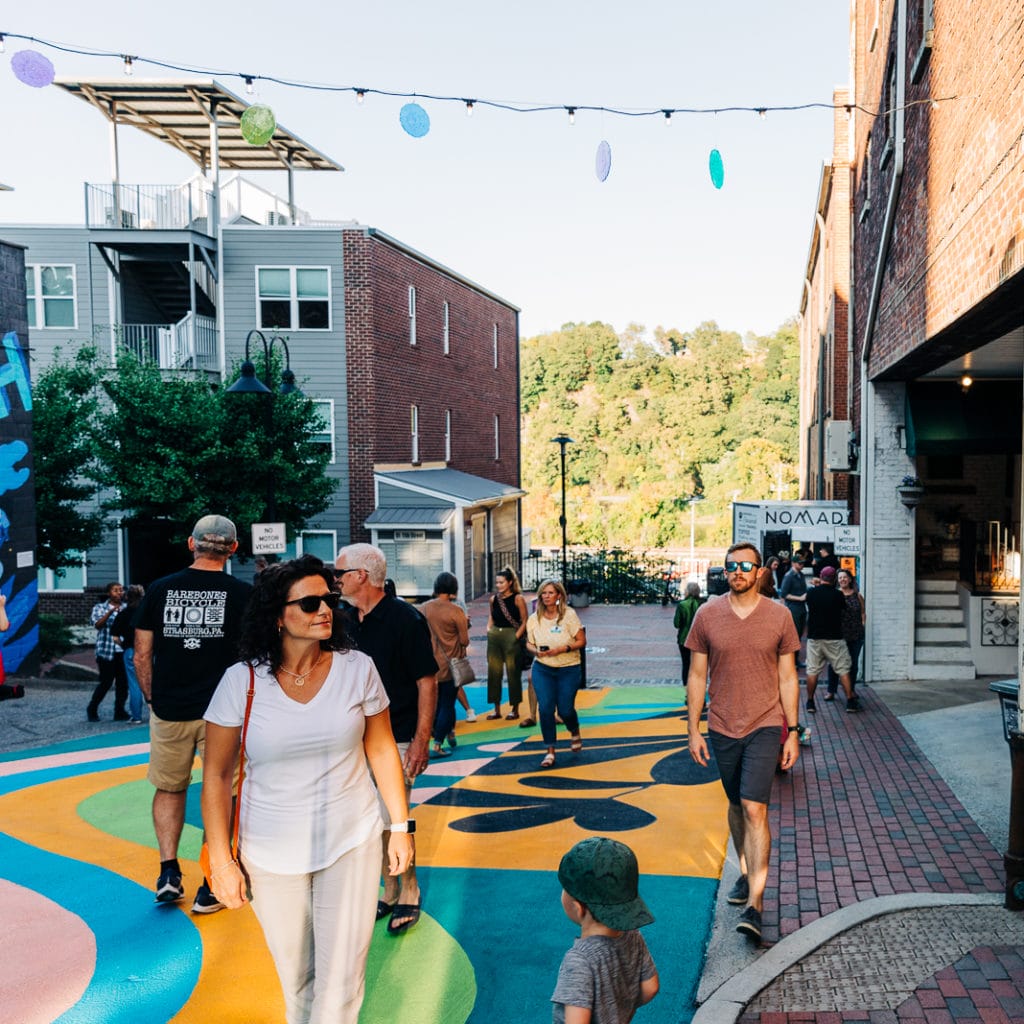
Art Alley, a public art project located in Downtown Lynchburg off of Commerce Street.
Lynchburg, Virginia is a vibrant arts and cultural hub with a rich history and a thriving arts community. The city offers a diverse range of cultural experiences, including live music, theater, art galleries, museums, and festivals, making it a great destination for art enthusiasts and culture seekers.
The Maier Museum of Art at Randolph College has an impressive collection of American art through the 19th-21st centuries and the Academy Center of the Arts offers live performances throughout the year.
Lynchburg also has a thriving food and beverage scene, that included many locally-owned restaurants, breweries, and wineries. With Southern hospitality, a revitalized downtown, and one of the longest-running farmers markets in the country, it’s no surprise that Lynchburg is home to a flourishing foodie scene. Have a craving? Here, there’s a culinary destination to satisfy it.
6. Where to stay
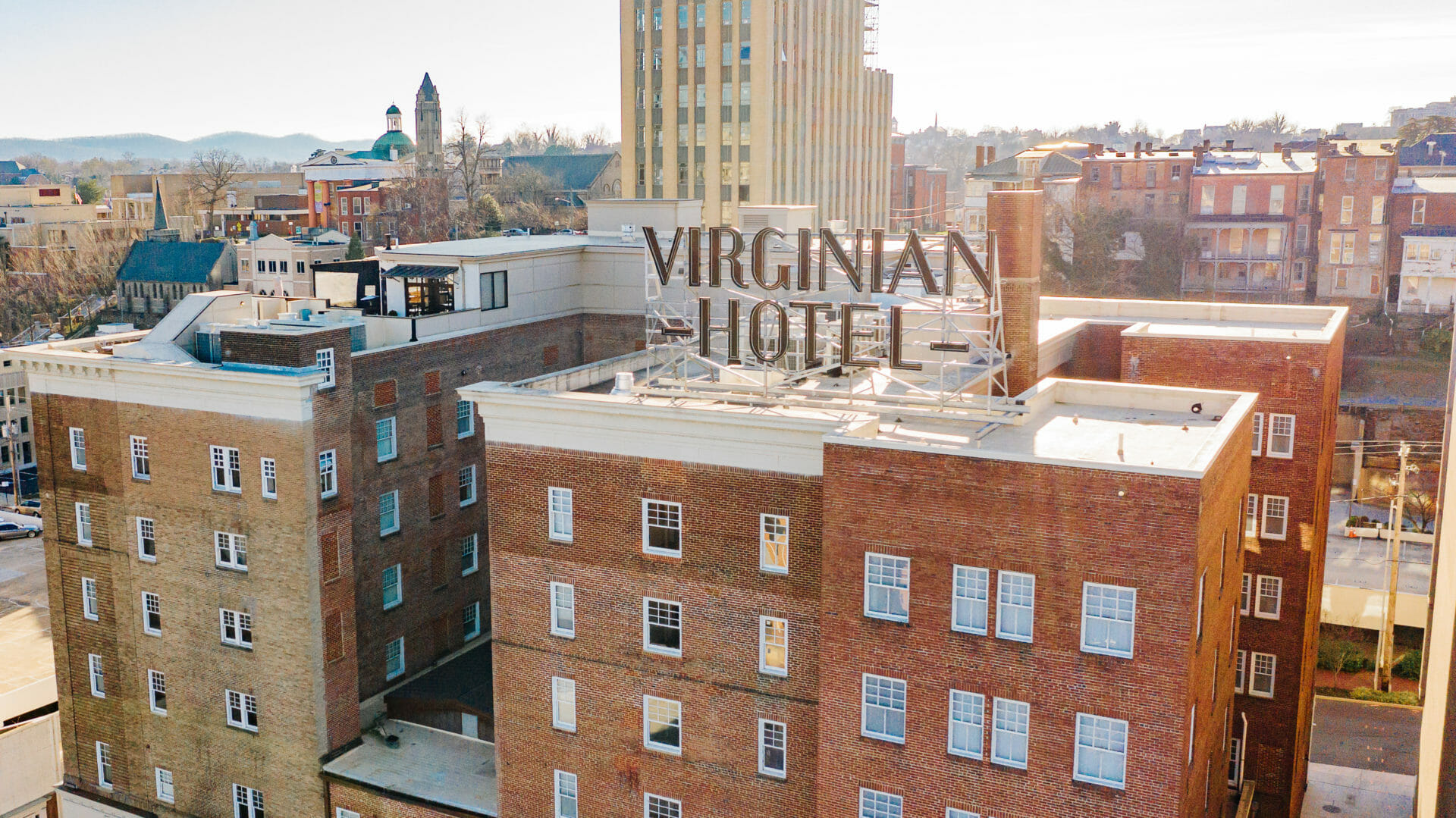
The Virginian Hotel is located in the heart of Downtown Lynchburg and includes three dining options.
From boutique and historic hotels to well-known brands, you won’t have a hard time finding a place to stay in Lynchburg. Lynchburg’s unique knack for repurposing industrial spaces means that hotels like the Craddock Terry and The Virginian Hotel. These hotels not only situate you right in the middle of downtown Lynchburg, but they will offer an eclectic, distinct aesthetic and restaurants located inside the hotel. And with national chains like the Hilton Garden Inn or Courtyard by Marriott setting up shop to offer affordable, luxury accommodations, you’ll find the perfect place to rest at the end of the day.
Plan a Visit to Lynchburg
We’re so excited for you to come to visit Lynchburg! For more help finding out where to go and what to see while you’re here, check out our visitor guide, and stop by our Museum & Visitor Services. We can’t wait to host you!
#LYHLovesYou
